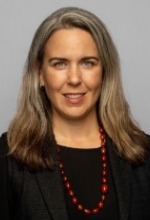CANCELLED - Calgary Branch Professional Development | Charitable Giving Strategies
Did you know donating publicly traded securities in kind can be one of the most tax-efficient ways to support your legacy goals? Make your giving more impactful with tax-efficient strategies and tools tailored for savvy donors. This presentation explores how to maximize your philanthropic goals using donor-advised funds, planned giving strategies, and charitable tax benefits.
How it works: You donate shares directly to a charity and you don’t pay capital gains tax—and neither does the registered charity. You receive a tax receipt for the full fair market value, and the entire amount goes to helping your legacy goals.
We’ll delve into the psychology of investor behaviour, helping you understand how emotions and values shape giving decisions. Learn how to align your generosity with financial goals, minimize tax liability and create a lasting legacy. Whether you’re building a strategy for now or the future, this session offers actionable insights to help you give with purpose and confidence.
For any questions about this event, please contact [email protected].
About the presenter
 Jeanette Boleantu, B.Mgt., PFP, CFP, senior wealth advisor with Assante Financial Management Ltd., describes the main function of modular financial planning as being the identification of issues pertaining to regulations and legislation that add complexity. Evaluating Canadian citizens' fact patterns and identifying issues then helping to implement comprehensive planning recommendations is the fundamentals of this practice.
Jeanette Boleantu, B.Mgt., PFP, CFP, senior wealth advisor with Assante Financial Management Ltd., describes the main function of modular financial planning as being the identification of issues pertaining to regulations and legislation that add complexity. Evaluating Canadian citizens' fact patterns and identifying issues then helping to implement comprehensive planning recommendations is the fundamentals of this practice.
Her client base ranges coast to coast to coast—including the next generation born or raised in expatriate communities, a group she refers to as Next-Pats. “These individuals experience the world in a way that others don’t, through what I call an ‘opportunity concentration lens,’” says Jeanette. “It’s almost like Next-Pats are walking around with 3-D glasses on, revealing opportunities like a heat map as a direct result of multiple country and cultural exposure in their formative years.”
